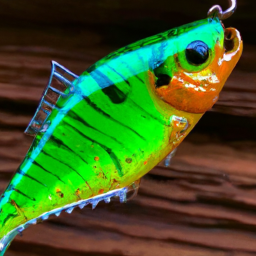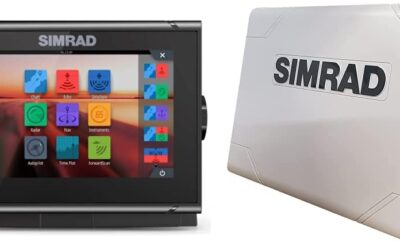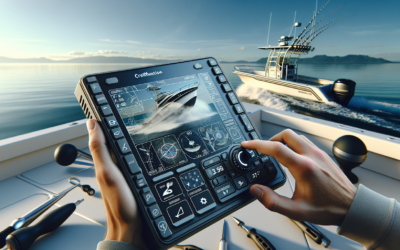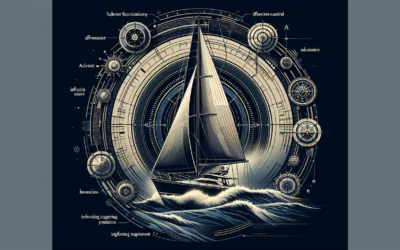Are you an avid angler looking to up your fishing game? Look no further! We have just the product for you – “Matching Your Fish Finder to Different Water Environments: Lakes, Rivers, Shores, and Oceans.” This comprehensive guide will help you navigate through various water environments, ensuring that your fish finder is perfectly tailored to the specific conditions you’ll encounter. From lakes to rivers, shores to oceans, we’ve got you covered. Get ready to reel in the big ones with confidence!

Lakes
Depth and Coverage
When it comes to lakes, one of the key factors to consider is the depth of the water. The depth plays an important role in determining the behavior and location of fish. Shallow areas are often where fish can be found feeding, especially in the morning and evening. On the other hand, deeper areas of the lake may hold larger fish seeking cooler water or seeking cover. Understanding the depth of the lake can help you narrow down your search for fish.
Coverage refers to the overall area of the lake that your fish finder can effectively scan. This is influenced by the power of the fish finder and the quality of its transducer. A fish finder with higher power and a high-quality transducer can provide greater coverage, allowing you to explore a larger area of the lake and locate fish more effectively.
Water Clarity
Water clarity is another important consideration when using a fish finder in lakes. Clear water allows for better visibility, making it easier to locate fish. In clear lakes, you may be able to see the fish directly on the fish finder’s display. On the other hand, if the water is turbid or murky, it may be more challenging to identify fish on the screen.
Temperature
The water temperature in lakes can vary depending on the season, depth, and location. Different fish species have specific temperature preferences, so understanding the water temperature can help you determine where fish are likely to be located. Warmer water tends to have more active fish, while colder water may cause fish to become more sluggish.
Vegetation
Vegetation plays a significant role in the ecosystem of a lake and can attract various fish species. Fish often seek shelter in and around aquatic vegetation, so being able to locate and understand the extent of vegetation is crucial for successful fishing. A fish finder that can detect vegetation can help you identify potential hotspots where fish may congregate.
Rivers
Current and Flow
When using a fish finder in rivers, it’s essential to consider the current and flow of the water. Fish in rivers tend to position themselves in areas where the current is less strong, such as behind rocks or submerged structures. By understanding the flow patterns of the river, you can identify these areas and increase your chances of finding fish.
Depth and Structure
Knowing the depth and structure of a river is crucial for fishing success. Fish tend to hide near structures such as logs, boulders, or submerged trees, as they provide shelter and ambush points. A fish finder that can accurately measure the depth and identify structures can help you target these areas and increase your chances of catching fish.
Water Clarity
Water clarity in rivers can vary depending on weather conditions, water runoff, and other factors. In general, rivers tend to have more sediment in the water, making it less clear compared to lakes. However, there are exceptions, such as spring-fed or mountain streams that have crystal-clear water. Understanding the water clarity can help you adjust your fishing techniques and locate fish more effectively.
Temperature
The temperature of river water can vary depending on the season, weather, and geographic location. Different fish species have different temperature preferences, so understanding the water temperature can help you determine where to focus your fishing efforts. Warmer water may be more productive, as fish tend to be more active in higher temperatures.
Shores
Depth and Structure
When fishing along the shores, it’s important to consider the depth and structure of the water. Fish often congregate near the shoreline, as it provides them with food sources and shelter. A fish finder that can accurately measure the depth and locate submerged structures can help you identify these productive areas along the shore.
Water Clarity
The water clarity along the shores can vary depending on various factors, such as weather conditions and proximity to human activities. Clear water allows for better visibility, making it easier to locate fish. However, even in murky water, fish can still be found close to the shore, especially if there is cover or structure.
Temperature
The temperature along the shores can vary depending on the season, time of day, and water depth. Fish tend to be more active in warmer water, so understanding the temperature can help you determine the best time and location to fish along the shores. Warmer water near the shore can attract various fish species, especially during feeding times.
Vegetation
Vegetation along the shores can provide habitat and food sources for fish. Fish often use aquatic plants as shelter or hunting grounds. Being able to detect and identify vegetation using a fish finder can help you find areas where fish are likely to be present. Look for underwater plant beds or areas with submerged weeds to increase your fishing success.
Oceans
Depth and Coverage
When fishing in the vastness of the ocean, understanding the depth and coverage is essential for locating fish. The ocean is known for its depth, and different fish species inhabit different depths. A fish finder that can measure the depth accurately can help you target specific depth ranges where certain fish species are likely to be found. Additionally, considering the coverage that your fish finder offers is crucial in ocean fishing, as larger coverage allows you to explore a wider area and increase your chances of finding fish.
Water Clarity
Water clarity in the ocean can vary depending on factors such as location, currents, and weather conditions. While the ocean’s water is generally more clear compared to rivers or lakes, there can still be variations in clarity. Clearer water allows for better visibility, making it easier to spot fish and underwater structures. A fish finder with high-quality imaging can help you take advantage of the clarity and locate fish effectively.
Temperature
The ocean’s temperature can vary depending on location, depth, and currents. Understanding the water temperature is essential for successful fishing, as different fish species have specific temperature preferences. Warmer waters tend to attract more active fish, while colder waters may hold different species that prefer cooler temperatures. By monitoring the temperature with your fish finder, you can narrow down your search and increase your chances of catching fish.
Underwater Topography
The ocean floor is home to diverse topography, including reefs, drop-offs, canyons, and sandbars. Understanding the underwater topography is crucial in ocean fishing as it helps you identify areas where fish are likely to congregate. A fish finder that can provide detailed imaging of the ocean floor allows you to locate these structures and increase your chances of success.
Fish Finder Features
Transducer Type
The transducer is a crucial component of a fish finder, as it sends and receives sonar signals that provide information about the underwater environment. There are different types of transducers, such as transom-mounted, trolling motor-mounted, or thru-hull transducers. The type of transducer you choose depends on your fishing style and the type of boat you have.
Frequency
Fish finders operate using different frequencies, such as 50 kHz, 83 kHz, 192 kHz, or even multiple frequencies. Lower frequencies can penetrate deeper water but may lack detailed imaging, while higher frequencies provide clearer images but have limited depth penetration. Choosing the right frequency depends on the depth and clarity of the water you fish in.
Cone Angle
The cone angle refers to the width of the sonar signal emitted by the transducer. A wider cone angle covers a larger area but provides less detail, while a narrower cone angle offers more detail but scans a smaller area. The cone angle you choose should align with your fishing style and the depth of the water you fish in.
Sonar Imaging
Sonar imaging refers to the display of the underwater environment on the fish finder’s screen. Different fish finders offer various types of imaging, such as traditional 2D sonar, DownScan Imaging, or SideScan Imaging. Traditional 2D sonar provides a basic representation of the underwater environment, while DownScan and SideScan Imaging offer more detailed and realistic images. Choosing the right sonar imaging depends on your preference and the level of detail you require.
Choosing the Right Frequency
Low Frequency
Low-frequency fish finders are ideal for fishing in deep water or when you need to penetrate dense vegetation. They provide greater depth penetration but may sacrifice some image detail. If you primarily fish in deep lakes or explore areas with dense vegetation, a low-frequency fish finder may be the right choice for you.
High Frequency
High-frequency fish finders are perfect for fishing in shallow or clear water. They offer clearer and more detailed imaging, making it easier to identify fish and structures. If you primarily fish in shallower bodies of water or areas with clear visibility, a high-frequency fish finder may be the best option for you.
Interpreting Sonar Imaging
Arch Shapes
When analyzing sonar imaging, one important factor to consider is the shape of the arches. Arches on the display usually indicate fish. A strong and well-defined arch suggests a large fish, while a weaker or incomplete arch may indicate a smaller fish or a fish moving quickly through the sonar beam. Understanding the shape of the arches can help you determine the size and behavior of the fish you are targeting.
Bottom Composition
Sonar imaging also provides information about the composition of the bottom. You may encounter different types of bottoms, such as mud, sand, gravel, or rock. Different fish species prefer different types of bottoms, so being able to interpret the composition can help you determine where fish are likely to be located. Additionally, certain bottoms may hold more structure or vegetation, making them more attractive to fish.
Fish Arches
Fish arches on the sonar display indicate the presence of fish in the water column. Understanding the size, shape, and clarity of the arches can help you identify the species of fish you are targeting. Additionally, observing the movement of the arches can provide information about the activity level and behavior of the fish.
Thermoclines
Thermoclines are layers of water with a significant temperature change compared to the surrounding water. They often occur in deeper bodies of water and can affect fish behavior. Observing sonar imaging for temperature differences can help you identify thermoclines and target specific depth ranges where fish are likely to be concentrated.
Adjusting for Water Clarity
Adjusting Sensitivity
When fishing in water with varying clarity, adjusting the sensitivity of your fish finder can significantly improve its performance. In clear water, you can increase the sensitivity to detect even subtle changes in the underwater environment. On the other hand, in murky water, you may need to decrease the sensitivity to filter out excessive noise and focus on more significant features.
Using Filters
Many fish finders offer filters that allow you to adjust the display and improve visibility in specific conditions. For example, a noise filter can help reduce interference caused by waves or other factors. A color palette filter can enhance the contrast and make it easier to distinguish between different objects. Experimenting with different filters can help you optimize the display for the specific water conditions you are fishing in.
Understanding Depth and Coverage
Understanding Depth
Understanding the depth provided by your fish finder is crucial for locating fish. By knowing the depth of the water you are fishing in, you can target specific areas that match the preferences of the fish species you are targeting. Additionally, understanding the changes in depth can help you identify drop-offs, ledges, or other underwater structures that fish may use as cover or feeding areas.
Reading Coverage
The coverage provided by your fish finder determines the area you can effectively scan and explore. A wider coverage allows you to survey a larger area and increase your chances of locating fish. However, it’s important to balance coverage with resolution and detail. A fish finder with excessive coverage may sacrifice image quality, making it harder to identify fish or structures. It’s essential to find the right balance that suits your fishing style and the type of water you are fishing in.
Considering Vegetation and Structure
Detecting Vegetation
Being able to detect and identify vegetation is crucial for successful fishing in various water environments. Vegetation provides shelter, attracts insects, and serves as a hunting ground for fish. A fish finder that can accurately locate vegetation allows you to target these productive areas and increase your chances of catching fish. Look for areas with dense weed beds, submerged grass, or visible aquatic vegetation on the fish finder’s display.
Identifying Structures
Understanding the underwater structures that fish use as cover and ambush points is essential for successful fishing. A fish finder that can identify structures such as submerged trees, stumps, rocks, or artificial reefs can help you target these areas and increase your chances of finding fish. Observing the sonar imaging for irregular shapes or distinct features can help you identify potential structures that may hold fish.
By matching your fish finder to different water environments, you can optimize your fishing experience and increase your chances of success. Understanding the depth, water clarity, temperature, and vegetation of lakes, rivers, shores, and oceans allows you to make informed decisions and target specific areas where fish are likely to be present. Additionally, utilizing the features of your fish finder, such as the transducer type, frequency, cone angle, and sonar imaging, enhances your ability to locate and interpret underwater fish and structures. By adjusting for water clarity and understanding depth and coverage, you can optimize your fishing techniques and improve your fishing results. So, next time you head out to explore different water environments, make sure your fish finder is tailored to the specific conditions and get ready for a successful day of fishing!











